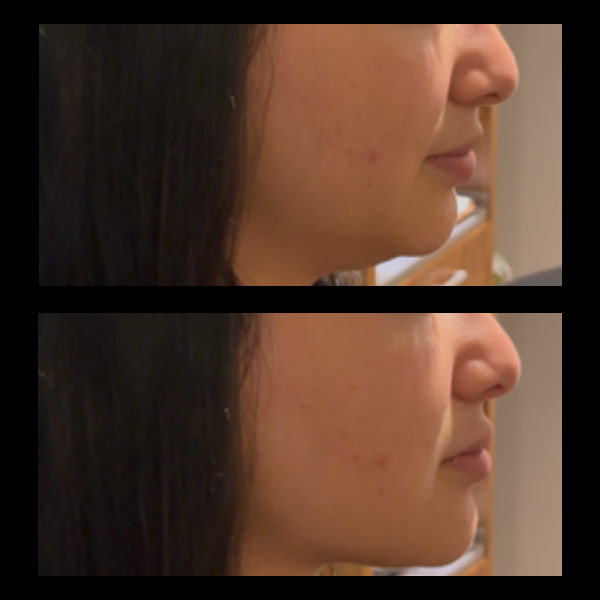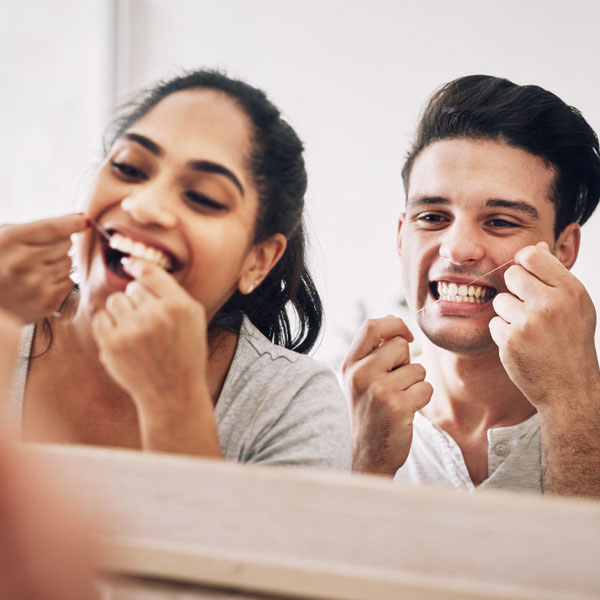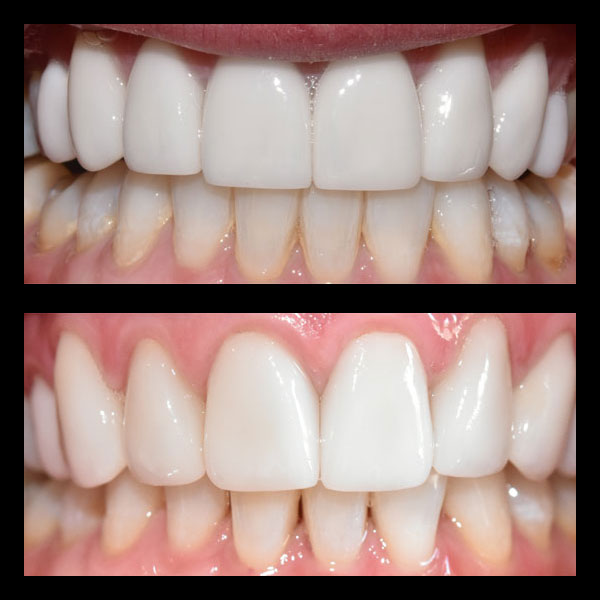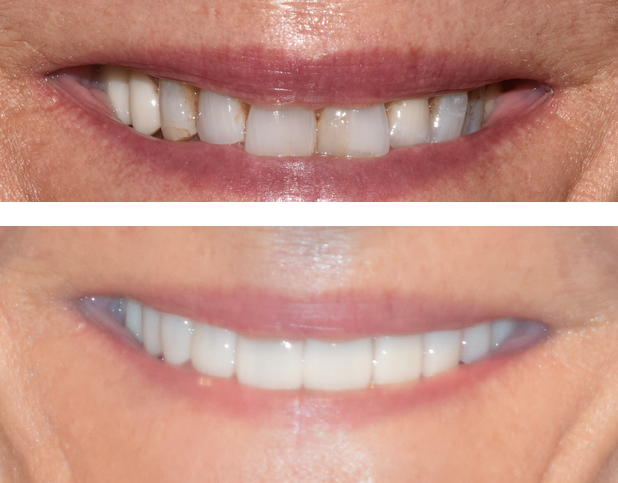Achieve a Flawless Smile with Advanced Dental Restorations
When a tooth suffers from decay or damage that is too extensive for a simple filling but not severe enough to require a full dental crown, porcelain inlays and onlays offer a robust and aesthetically pleasing solution. These custom-made restorations are designed to precisely fit the prepared tooth, restoring its shape, strength, and natural appearance. At Incredible Smiles in Boulder, we specialize in these esthetic restorations, helping you regain a healthy, beautiful smile with minimally invasive techniques.
What are Dental Inlays and Onlays?
Dental inlays and onlays, often referred to as indirect fillings, are conservative dental restorations used to repair teeth that have moderate decay or damage. Unlike direct fillings, which are molded into place within the mouth during a single visit, inlays and onlays are fabricated in a dental laboratory or using in-office CEREC® technology and then bonded to the damaged tooth by your dentist. The key difference lies in the extent of coverage:
Porcelain Inlays
An inlay is used when the damage or decay is confined to the indented top surfaces (cusps) of a tooth. It fits within the contours of the tooth, essentially filling the space created by decay or fracture. Porcelain is an excellent material for inlays because it can be matched to the natural color of your teeth, making the restoration virtually invisible. This makes them a popular choice for cosmetic dentistry.
Porcelain Onlays
An onlay is more extensive than an inlay. It is used when the damage involves one or more of the tooth’s cusps. An onlay covers a larger portion of the tooth’s biting surface, restoring the damaged cusps and providing structural support. Because they cover more of the tooth, onlays are sometimes called “partial crowns.” Like inlays, porcelain onlays offer superior aesthetics and durability.
The Advantages of Choosing Porcelain for Your Inlays and Onlays
Porcelain is a highly favored material in modern restorative dentistry for several compelling reasons, especially when it comes to inlays and onlays:
- Superior Aesthetics: Porcelain can be precisely color-matched to your natural teeth, creating a seamless and virtually undetectable restoration. This is a significant advantage over metal amalgam fillings. Explore our dental before & after gallery to see the transformative results.
- Durability and Strength: Dental porcelain is a strong, resilient material that can withstand biting and chewing forces. When bonded to the tooth, it can actually increase the tooth’s strength.
- Stain Resistance: Porcelain is less porous than natural tooth enamel and composite resin, making it more resistant to staining from coffee, tea, or red wine.
- Biocompatibility: Porcelain is a biocompatible material, meaning it is well-tolerated by the gum tissues and oral environment. This contrasts with some concerns about metal restorations. Incredible Smiles also offers non-metal fillings for those seeking biocompatible options.
- Conservative Tooth Preparation: Compared to full crowns, inlays and onlays require less removal of healthy tooth structure, preserving more of your natural tooth.
- Precise Fit: Because they are custom-fabricated in a lab or with CEREC®, inlays and onlays offer a more precise fit than direct fillings. This tight fit helps to seal out bacteria and prevent further decay.
The Porcelain Inlay/Onlay Procedure: What to Expect
The process for placing porcelain inlays and onlays typically involves two appointments at our Boulder dental office, though some cases may be completed in a single visit using advanced CEREC® technology.
1. First Appointment: Preparation and Impression
- Examination and Anesthesia: Your dentist will examine the tooth and may take X-rays to assess the extent of the damage. Local anesthesia will be administered to ensure your comfort throughout the procedure. Our Care & Comfort philosophy ensures a relaxing experience.
- Tooth Preparation: The decayed or damaged portion of the tooth is carefully removed. The tooth is then shaped to receive the inlay or onlay.
- Impression: An impression (mold) of the prepared tooth and surrounding teeth is taken. This impression is sent to a dental laboratory where your custom porcelain inlay or onlay will be fabricated. If CEREC® is used, a digital scan is taken, and the restoration is milled in-office.
- Temporary Restoration: A temporary filling or onlay is placed on the prepared tooth to protect it while your permanent restoration is being made.
2. Second Appointment: Placement of the Restoration
- Removal of Temporary: The temporary restoration is removed, and the tooth is cleaned.
- Fitting the Inlay/Onlay: Your dentist will place the porcelain inlay or onlay on your tooth to check the fit, color, and bite. Adjustments are made as necessary.
- Bonding: Once the fit is perfect, the inlay or onlay is permanently bonded to the tooth using a strong dental adhesive.
- Polishing: The restoration is polished to ensure a smooth, comfortable, and natural-looking finish.
Comparing Restorative Options
Understanding how inlays and onlays compare to other restorative treatments can help you make an informed decision about your dental care.
| Feature | Porcelain Inlay/Onlay | Direct Filling (e.g., Composite) | Dental Crown |
|---|---|---|---|
| Purpose | Moderate decay/damage, preserves tooth structure. | Minor to moderate decay. | Extensive decay/damage, covers entire tooth. |
| Material | Porcelain (primary), gold, composite. | Composite resin, amalgam. | Porcelain, ceramic, metal, PFM. |
| Aesthetics | Excellent (porcelain matches tooth color). | Good to Excellent (composite). Poor (amalgam). Check out our dental bonding services for composite options. | Excellent (all-porcelain/ceramic). |
| Durability | Very good to excellent, long-lasting. | Moderate to good. | Excellent, very long-lasting. |
| Tooth Preservation | More conservative than crowns. | Most conservative. | Requires significant tooth reduction. |
| Visits Required | Typically two (or one with CEREC®). | Typically one. | Typically two (or one with CEREC®). |
Are Porcelain Inlays and Onlays Right for You?
Porcelain inlays and onlays are an excellent restorative choice for many patients. You might be a good candidate if:
- You have a tooth with moderate decay or a fracture that is too large for a standard filling.
- You want a durable, long-lasting restoration.
- Aesthetics are important to you, and you prefer a tooth-colored restoration.
- You wish to preserve as much of your natural tooth structure as possible.
- You have old, large metal fillings that you’d like to replace with a more aesthetic and biocompatible option.
During your consultation at Incredible Smiles, our dentists, Dr. Priya Uppal or Dr. Lori Kemmet, will thoroughly evaluate your dental health and discuss whether porcelain inlays or onlays are the most suitable option for your specific needs. We also offer other restorative dentistry services to ensure comprehensive care.
Caring for Your Porcelain Restorations
With proper care, porcelain inlays and onlays can last for many years, even decades. To maintain your restorations and overall oral health:
- Practice Good Oral Hygiene: Brush twice a day with fluoride toothpaste and floss daily to remove plaque and prevent decay around the restoration margins.
- Regular Dental Check-ups and Cleanings: Visit Incredible Smiles for routine teeth cleanings and examinations. Professional cleanings help keep your restorations and natural teeth healthy.
- Avoid Chewing Hard Objects: While porcelain is strong, avoid biting down on extremely hard items like ice, hard candy, or non-food objects to prevent fracturing the restoration or your natural tooth.
- Wear a Night Guard if You Grind Your Teeth: If you suffer from bruxism (teeth grinding), ask us about a custom night guard to protect your restorations and natural teeth from excessive wear.
Esthetic Restorations at Incredible Smiles in Boulder, CO
At Incredible Smiles, located in the heart of Boulder, Colorado, we are dedicated to providing advanced dental solutions that combine artistry with technology. Our experienced dentists, Dr. Priya Uppal and Dr. Lori Kemmet, utilize state-of-the-art techniques, including 3D cone-beam imaging and laser dentistry, to ensure precise and comfortable treatments. Whether you need porcelain inlays, onlays, or other esthetic restorations, we are committed to helping you achieve a smile that is both healthy and beautiful in our spa-like environment. We strive to make every visit a positive experience, focusing on your individual needs and aesthetic goals.
Our expertise in physiologic dentistry ensures that your restorations not only look great but also function harmoniously with your bite and jaw.
Ready to Enhance Your Smile?
If you’re in Boulder or surrounding areas and considering porcelain inlays, onlays, or other aesthetic dental restorations, contact Incredible Smiles today. Let us help you restore the beauty and function of your teeth.
Frequently Asked Questions (FAQ)
1. How long do porcelain inlays and onlays last?
With proper care and regular dental check-ups, porcelain inlays and onlays can last for 10 to 30 years, or even longer. Their longevity depends on factors like oral hygiene, biting forces, and the health of the underlying tooth.
2. Are porcelain inlays and onlays painful?
The procedure is typically performed under local anesthesia, so you should not feel any pain during the tooth preparation or placement. Some minor sensitivity may occur after the procedure, but this usually subsides quickly. Our team at Incredible Smiles prioritizes your comfort.
3. Can porcelain inlays or onlays fall out?
It is rare for a well-fitted and properly bonded inlay or onlay to fall out. However, if it does become loose or dislodged, contact your dentist_brand immediately. Do not attempt to reattach it yourself.
4. How much do porcelain inlays and onlays cost in Boulder?
The cost can vary depending on the size and complexity of the restoration, the materials used, and your specific dental needs. We can discuss costs and dental insurance options during your consultation. Incredible Smiles also offers financing options.
5. What is the difference between an inlay, onlay, and a filling?
A filling is a direct restoration placed and shaped in the mouth in one visit, typically for smaller cavities. Inlays and onlays are indirect restorations made in a lab (or with CEREC®) for larger areas of decay. An inlay fits within the tooth cusps, while an onlay covers one or more cusps. Both are generally more durable and esthetic for larger restorations than standard fillings.
6. Can I get a porcelain inlay/onlay if I clench or grind my teeth?
Yes, but it’s crucial to address the clenching or grinding (bruxism). Your dentist may recommend a night guard to protect your restoration and natural teeth. We also offer Botox for clenching as a treatment option at Incredible Smiles.
Glossary of Dental Terms
Aesthetic Restoration: Dental treatments focused on improving the appearance of teeth and gums, often restoring natural beauty. Also known as cosmetic dentistry.
Biocompatible: A material that is not harmful or toxic to living tissue. Our non-metal fillings utilize biocompatible materials.
Bruxism: The medical term for habitual, involuntary grinding or clenching of the teeth, especially during sleep.
CEREC® (Chairside Economical Restoration of Esthetic Ceramics): A dental technology that allows for the fabrication of ceramic dental restorations (like crowns, inlays, and onlays) in a single dental visit.
Cusps: The pointed or rounded projections on the chewing surface of a tooth.
Dental Crown: A tooth-shaped “cap” that is placed over a tooth to cover the tooth to restore its shape and size, strength, and improve its appearance. View our crowns & bridges page for more information.
Impression: A mold taken of the teeth and surrounding oral tissues, used to create models for dental restorations.
Inlay: An indirect dental restoration that fits into a prepared cavity within the cusps of a tooth.
Onlay: An indirect dental restoration that covers one or more cusps of a tooth, also known as a partial crown.
Physiologic Dentistry: A branch of dentistry focusing on the harmonious relationship between the teeth, jaw joints (TMJ), and muscles. Learn more about our approach to physiologic dentistry.








